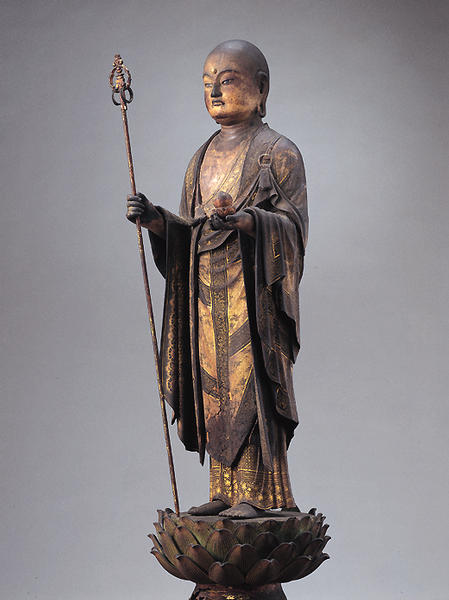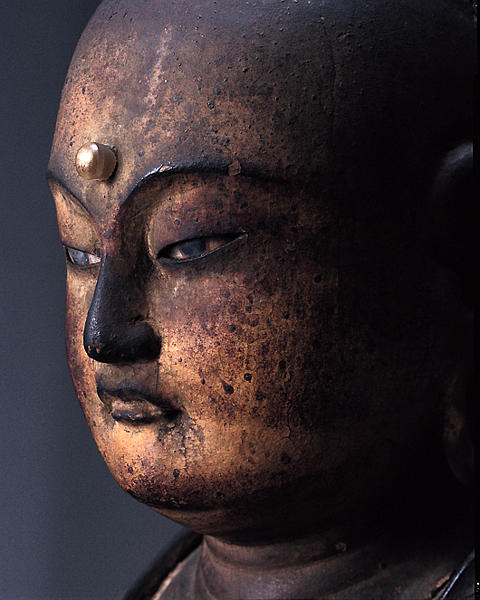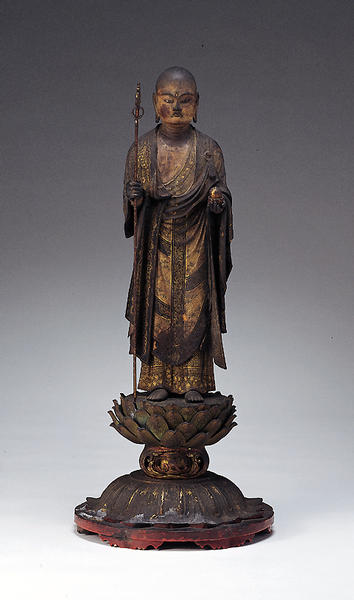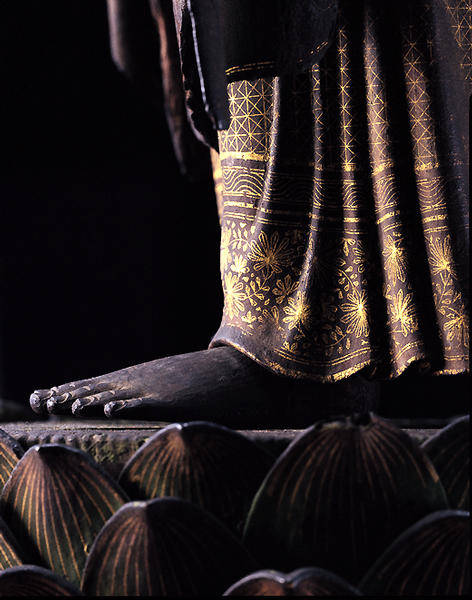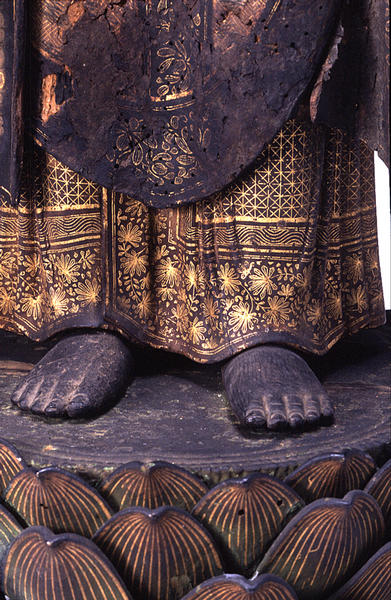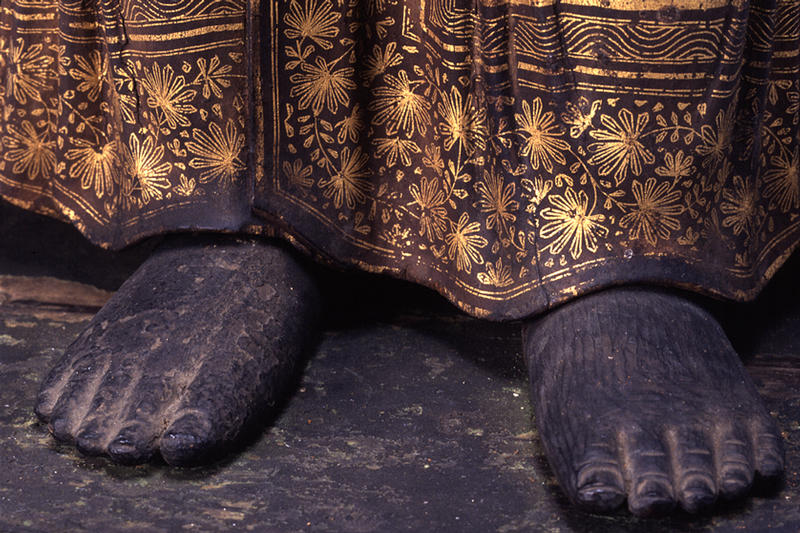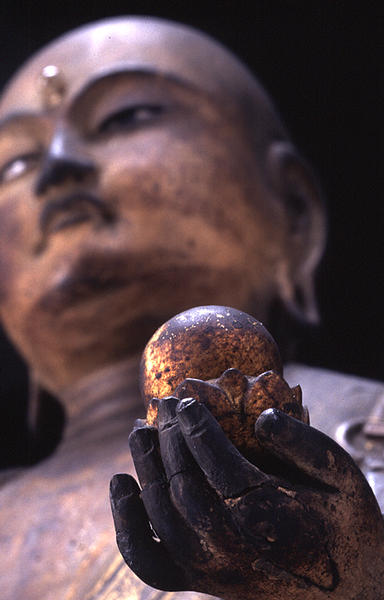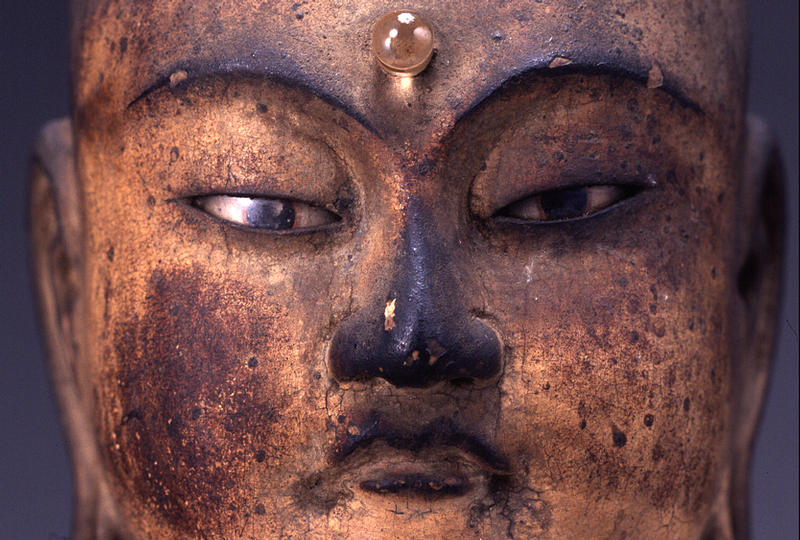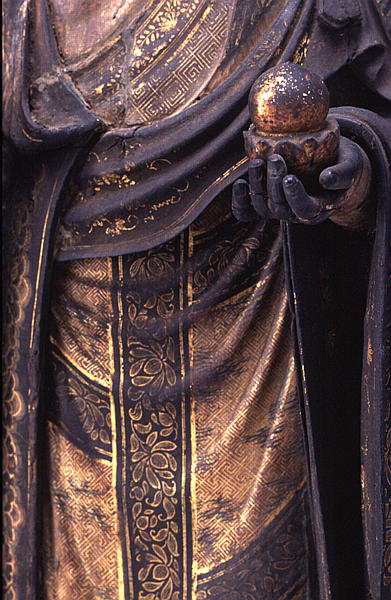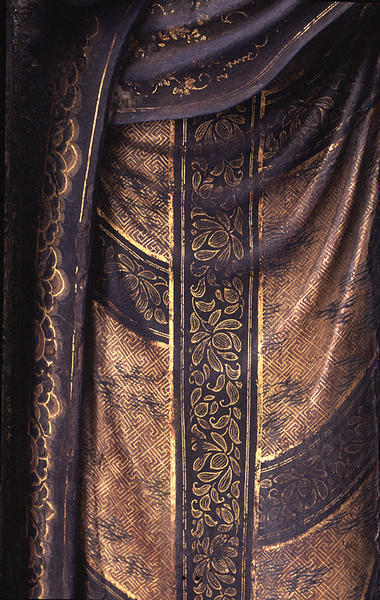Standing Jizō Bosatsu
- Kamakura period
- 13c
- Wood with pigments, crystal eyes, kirikane cut gold-leaf decoration
- H-52.4
- Important Cultural Property
Catalogue Entry
Kamakura period, 13th century
Assembled wood with polychrome
Figure height, 52.4cm
Jizo acts to save people during the long Buddha-less age which extends between the death of Shaka (S⇔akyamuni) and the coming of Miroku (Maitreya). As a result, this deity is a Bosatsu (Bodhisattva), and yet he wears the shaved head of a monk. Many images of this deity from the Heian and later periods show him holding a staff in his right hand. This staff is based on the belief that this deity does not reside in the Pure Land, but rather remains active in this world.
The present image holds a jewel in his left hand and a staff in his right hand, forming the standard iconography of this deity, and he is also placed in the one-foot-slightly-forward pose to indicate his walking in the present world.
This image is made of hinoki (Japanese cypress) carved in the yosegi zukuri form of joined construct, but the joining method is extremely intricate and follows that of small images. In general, the head and body area is formed from two pieces of wood joined front to back, and the neck and collar area of the chest have been split. The face is a separate piece of wood dovetailed on in a mask-like fashion, while crystal has been inset into the carved eye areas to form crystal eyeballs. Both sides of the figure, both hands, and both feet have been carved from separate pieces of wood which were then dovetailed onto the central core. The rich patterning that adorns the drapery is particularly noteworthy on this image. Cut gold leaf (in which gold leaf is cut into thin strips) is used to form linked-vajra patterns, linked-hemp leaf patterns, linked-swastika patterns, karakusa vining plant motifs, and other decorative forms. The polychrome patterns that appear between these linked chains were outlined in gold paint.
The taut-checked face is dominated by the sharp gaze of the long eyes, forming an intent expression. The lavish patterning of the clothing motifs gives the image a sense of realism appropriate to his role as a savior in the real world. Both the image itself and the drapery patterns are typical examples of the styles prevalent during the second half of the Kamakura period. SI
